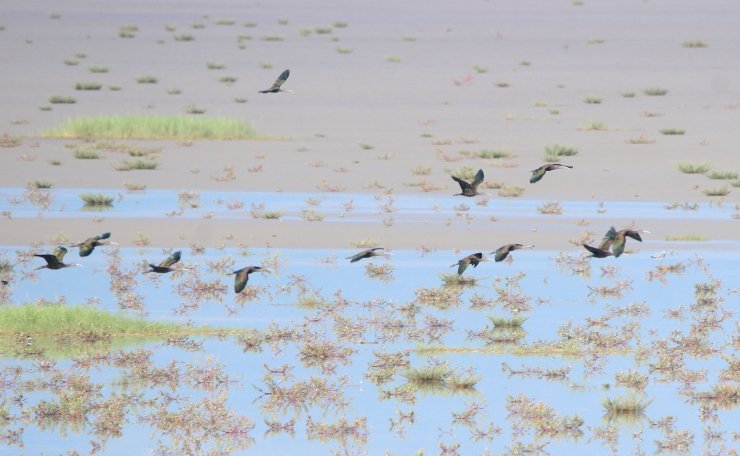
If you are like me, it is likely that you usually have a target species or two for each of your outings. My targets for last week’s trip to Lake Cuitzeo, 30 miles north of Morelia, were Baird’s Sandpipers and Wilson’s Phalaropes. Baird’sSandpipers can only be seen here in August and September, as they stop on their way from the Arctic Circle to southern South America; they do not normally visit central Mexico on its way back north. In theory, Wilson’s Phalaropes follow a similar path, though they summer a little further south, and winter a little further north. In practice, though, some can’t be bothered to make such a long trip, and spend the winter on Lake Cuitzeo. I am happy to affirm that I saw both, although the Baird’s were much less numerous than I had expected.
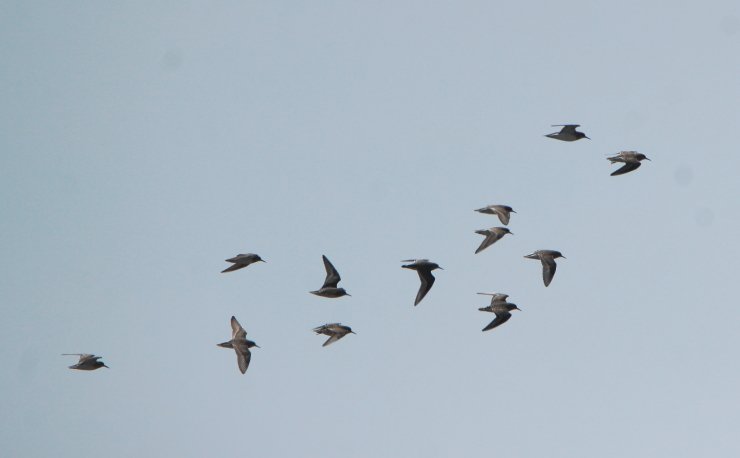 Baird’s Sandpipers: larger and stouter than our wintering Western and Least Sandpipers
Baird’s Sandpipers: larger and stouter than our wintering Western and Least Sandpipers
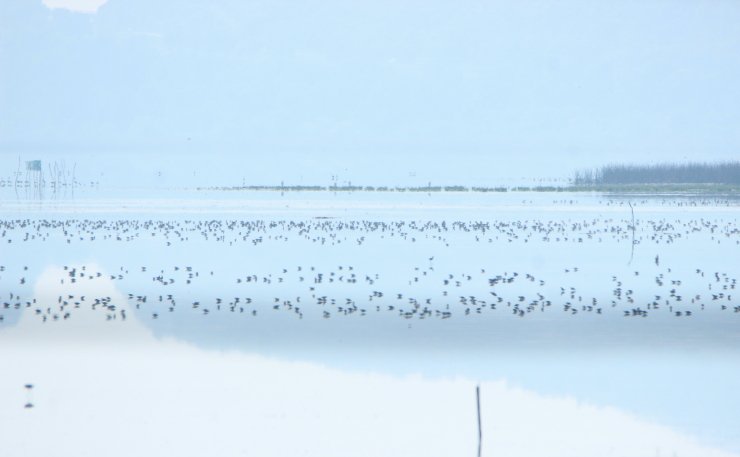 Trust me, those are all Wilson’s Phalaropes.
Trust me, those are all Wilson’s Phalaropes.
What I did not see was much of a lake. Wilson’s Phalaropes are small birds, but most of those you can see in the photo above were standing, not swimming, although they prefer to swim and spin to stir up food. (Again, you will have to trust me that they were standing.)
And that is in the “deeper” eastern half of this vast lake. Take a look at my photo of flying White-faced Ibises as the start of this post, and you can see the mere sheen of water that begins to form in the lake’s western half. No water is yet spilling through the culverts that connect the two halves; the only water that has accumulated on the western side is the result of direct summer rains that have fallen on the lakebed.
Still, as the header photo shows, even an almost-dry lake can offer some unusual beauty. I love the rather weird, pink-shaded new growth you can see in the lower part of that photo.
So does this Mexican Duck (NOT a Mallard sub-race, according to the 2020 AOS decision):
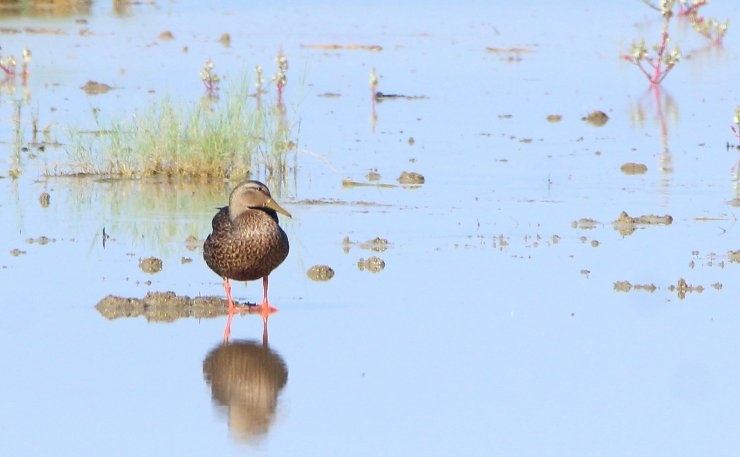 Note the (lack of) depth of this water.
Note the (lack of) depth of this water.
The green background of this next photo should be blue water. Still, this lakebed/meadow does show off the Loggerhead Shrike nicely. I understand that Shrike populations have plummeted in the U.S.; fortunately, they are still common down here.
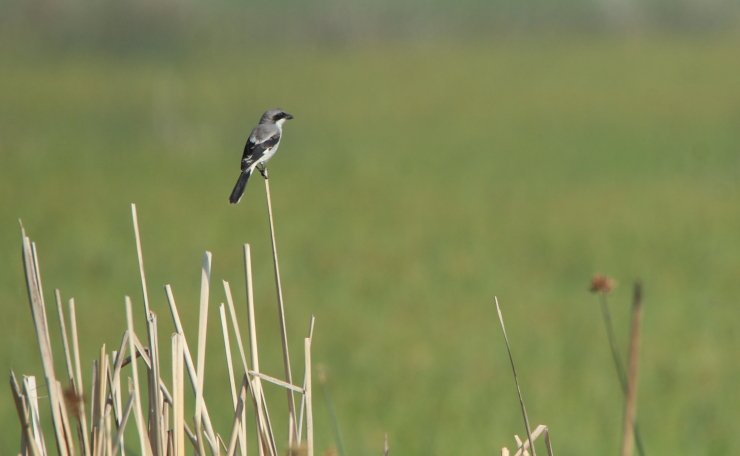
Some of the many Barn Swallows flying overhead took advantage of a deeper pond near the lake to make repeated dive-bombing dips in the water. I’m not sure why Swallows sometimes choose to bathe in this way, when I often see them bathing while standing in shallow water, like most birds do. Maybe they just like a little variety.
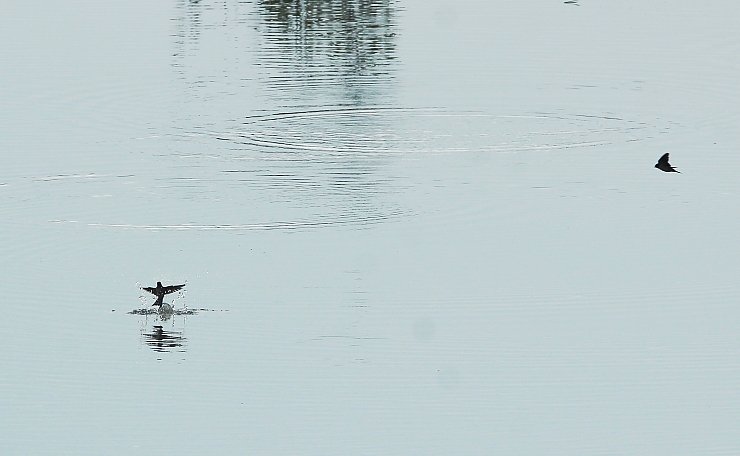
But the Fulvous Whistling-Ducks were the ones that really won my hearts. Of course they did! You think ducklings are cute? How about seventeen of them?
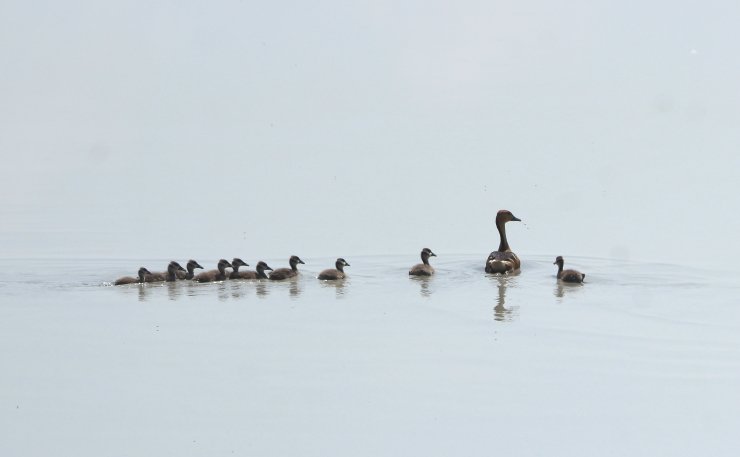 Ten ducklings…
Ten ducklings…
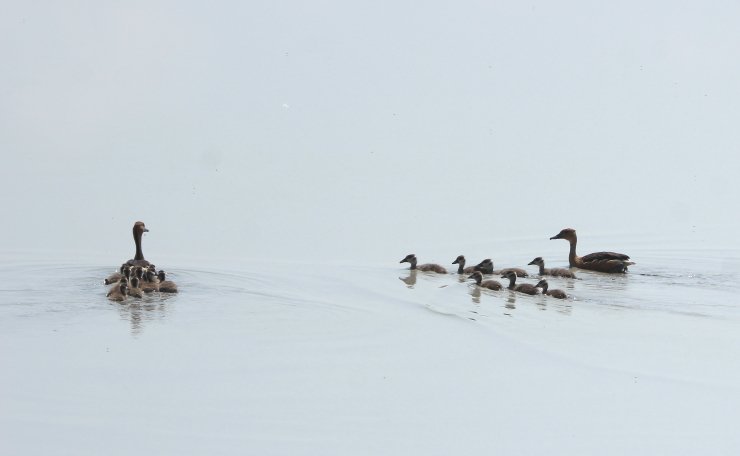 Here come seven more…
Here come seven more…
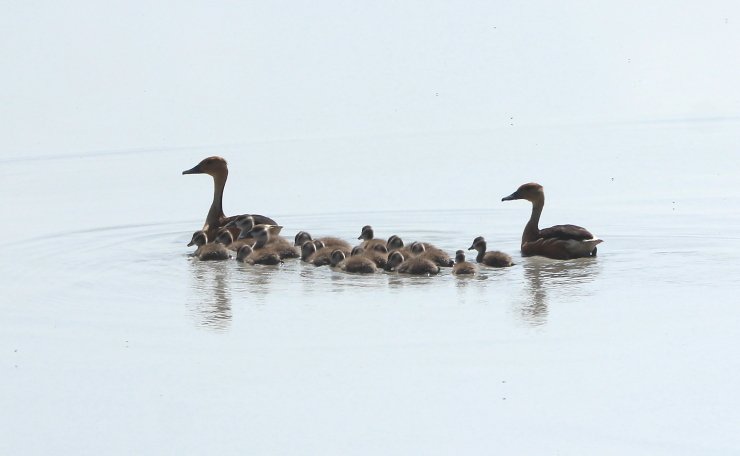 Seventeen ducklings!
Seventeen ducklings!
Extra points to these Whistling-Ducks for finding water deep enough to swim in.
Those of you who have never tasted a “tuna”, the fruit of the Prickly Pear cactus, may not understand how delicious this final photo looks. Some lucky Golden-fronted Woodpecker or Curve-billed Thrasher must have been feeling very satisfied.
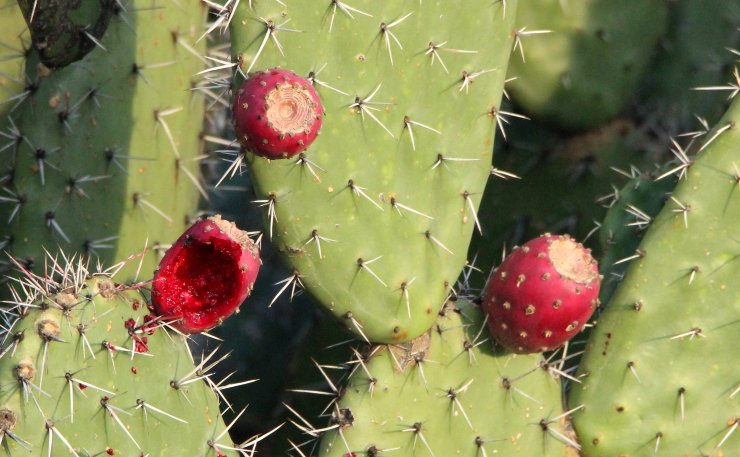


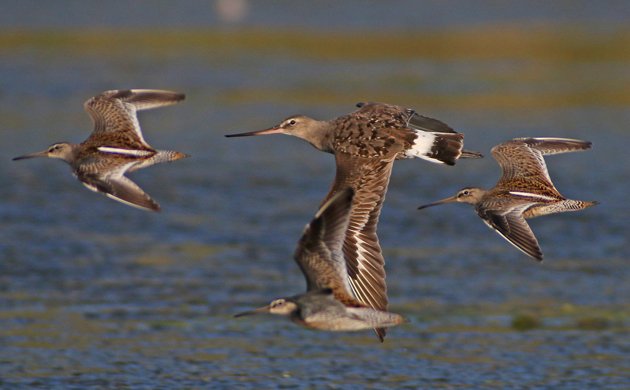
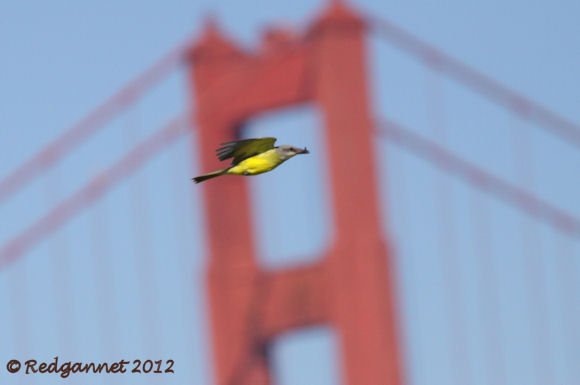

 New writers welcome – please contact us for details.
New writers welcome – please contact us for details.

















Hi Paul! Nice birding trip and amazing amount of Wilson’s Phalaropes, one of the species I still miss in my life list – well, it’s a mega rarity here in northern Europe. I would love to visit Morelia some day and who knows, maybe after this corona pandemic is over…
May it be so!